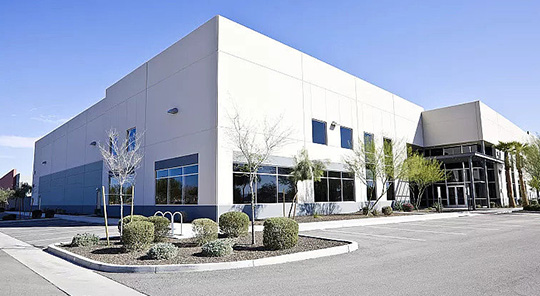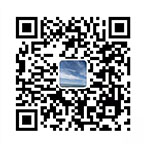
light source
The machine vision system mainly consists of three parts: image acquisition, image processing and analysis, and output or display. The acquisition of images is the core of machine vision, and the image acquisition system consists of three parts: light source, lens, and camera. The selection and rationality of light sources can directly affect at least 30% of the imaging quality. So light sources are a very important part of machine vision systems.
effect
By designing appropriate light sources for illumination, the target information in the image can be best separated from the background information, which can greatly reduce the difficulty of image processing algorithm segmentation and recognition, and improve the positioning and measurement accuracy of the system, thereby improving the reliability and comprehensive performance of the system. On the contrary, if the light source is not designed properly, it can lead to twice the result in image processing algorithm design and imaging system design. Therefore, the success or failure of the light source and optical system design is the primary factor determining the success or failure of the system.
- Illuminate the target and increase its brightness;
- Highlighting measurement features and simplifying image processing algorithms;
- Overcoming interference from ambient light, ensuring image stability, and improving image signal-to-noise ratio;
- Improve the positioning, measurement, and recognition accuracy of the visual system, as well as the operating speed of the system;
- Reduce the complexity of system design and create the most favorable imaging effect for image processing;
classification
1、Circular light source
Circular light sources provide different illumination angles and color combinations, which can better highlight the three-dimensional information of objects; High density LED array, high brightness; Multiple compact designs, saving installation space; Solve the problem of diagonal shading; Optional diffuse plate light guide for uniform light diffusion. Application areas: PCB substrate detection, IC component detection, microscope lighting, LCD correction, plastic container detection, integrated circuit printing inspection
2、Backlight source
Using high-density LED array surfaces to provide high-intensity backlighting can highlight the contour features of objects, making it particularly suitable as a stage for microscopes. Red and white dual-purpose backlight, red and blue multi-purpose backlight, can mix different colors to meet the multi-color requirements of different tested objects. Application areas: Measurement of mechanical component dimensions, external inspection of electronic components and ICs, film stain detection, transparent object scratch detection, etc.
3、Bar light source
Strip light source is the preferred light source for larger square structured objects to be measured; Colors can be matched according to needs and freely combined; The irradiation angle and installation can be adjusted freely. Application areas: metal surface inspection, image scanning, surface crack detection, LCD panel detection, etc.
4、Coaxial light source
Coaxial light sources can eliminate shadows caused by uneven surfaces of objects, thereby reducing interference; Partial use of a spectroscope design reduces light loss, improves imaging clarity, and uniformly illuminates the surface of the object. Application areas: The series of light sources are most suitable for scratch detection on surfaces of objects with extremely high reflectivity, such as metals, glass, film, chips, etc., damage detection of chips and silicon chips, Mark point positioning, and packaging barcode recognition.
5、AOI dedicated light source
Three color lighting from different angles, illuminating and highlighting the three-dimensional information of solder; Adding a diffuse plate to guide light and reduce reflection; Different angle combinations; Application field: Used for soldering detection of circuit boards.
6、Sphere integral light source
The inner wall of the hemisphere with integral effect uniformly reflects the light emitted from the bottom 360 degrees, making the illumination of the entire image very uniform. Application areas: Suitable for detecting curved surfaces, surface roughness, and curved surfaces, as well as detecting surfaces with strong reflection on metal and glass surfaces.
7、Linear light source
Ultra high brightness, using cylindrical lens focusing, suitable for various continuous detection scenarios on assembly lines. Application areas: dedicated to array camera lighting and AOI.
8、Point light source
High power LED, small size, high luminous intensity; Alternative to fiber optic halogen lamps, particularly suitable as coaxial light sources for lenses; Efficient heat dissipation device greatly improves the service life of the light source. Application field: Suitable for use with telephoto lenses, used for chip detection, Mark point positioning, chip and LCD glass substrate correction.
9、Combination strip light source
Four sided strip light configuration, with independent and controllable lighting on each side; The required lighting angle can be adjusted according to the requirements of the tested object, with wide applicability. Application cases: CB substrate detection, IC component detection, soldering inspection, Mark point positioning, microscope illumination, packaging barcode illumination, spherical object illumination, etc.
10、Aligning light source
Fast alignment speed; Large field of view; High precision; Small size, easy to detect and integrate; High brightness, optional auxiliary ring light source. Application field: VA series light source is a specialized light source for aligning automatic circuit board printing machines.
Characteristics of LED light sources
At present, machine vision light sources mainly use LEDs (light-emitting diodes), which are widely used in the industry due to their high degree of shape freedom, long service life, fast response speed, good monochromaticity, diverse colors, and high comprehensive cost-effectiveness
• Shape degrees of freedom
An LED light source is composed of many individual LEDs, so compared to other light sources, it can be made into more shapes, making it easier to design the shape and size of the light source according to the user's situation.
• Long service life
In order for the image processing unit to obtain accurate and reproducible measurement results, the lighting system must ensure stable image input for a considerable period of time. After continuous operation for 10000 to 30000 hours, the brightness of LED light sources decreases, but the effect is much better than other types of light sources. In addition, using a control system to make it work intermittently can suppress the heating of the light-emitting tube, and the lifespan will also be doubled.
• Fast response speed
The response time of LED light-emitting tubes is very short, and the true meaning of the response time is to ensure the switching of work between multiple light sources or different areas of a light source as required. When a dedicated controller is used to power the LED light source, the time to reach the maximum illumination is less than 10 seconds
• Colorful diversity
In addition to the shape of the light source, another aspect of obtaining stable image input is selecting the color of the light source. Even light sources of the same shape can result in significant differences in images due to differences in color. In fact, how to utilize the technical characteristics of light source colors to achieve the best contrast image effect has always been the main direction of light source development.
• Low comprehensive operating costs
Choosing products with low cost but no guaranteed performance will quickly offset the initial investment savings by daily maintenance and repair costs. Other light sources not only consume 2-10 times more electricity than LED light sources, but also need to be replaced almost every month, wasting a lot of valuable time for maintenance engineers. Moreover, the more light sources are put into use, the greater the cost of device replacement and labor. Therefore, choosing LED light sources with long lifespan is very economical in the long run.
How to choose
• Environmental requirement analysis
1. Understand the requirements for system structure and operation from customers, and determine the spatial structure relationship between industrial cameras, light sources, and measured objects.
The determined parameters include: Field of View (FOV), Working Distance (WD);
2. The spatial structure includes: direct, side, and back illumination;
Direct light source structure - partial annular light source, coaxial light source, dome light source;
Lateral light sources - partially circular light sources, strip light sources, line light sources, point light sources;
Back irradiation - square backlight, strip backlight.
• Analysis of Surface Texture and Color of Objects
1. Is the surface of an object curved or flat? Is the surface of the object smooth? Is the reflection strong?
Curved surface detection should use a dome light source, smooth surfaces should use coaxial light sources, and rough surfaces should use bright field light sources.
2. What is the transparency of an object?
Objects with good light transmittance can use IR light sources.
3. What color is the background (which we don't need to detect) and what color is the foreground (which we need to detect)?
A good light source means having good contrast - the background and foreground are very clear.
4. The foreground color changes frequently
It is advisable to use colored light sources and white light sources;
• Select Summary
1. Do you need a greater contrast between the foreground and background Consider using black and white cameras and color light sources
2. The issue of ambient light Try using a monochromatic light source with a filter
3. Flash surface? - Try using scattered dome light
4. Flash, flat, but rough surface Attempt to use coaxial scattered light
5. Looking at the shape of the surface Consider using a dark field of view (low angle)
6. When testing plastics - try using ultraviolet or infrared light
7. Need to see features through reflected surfaces Try using low angle line light sources (dark field of view)
8. Combination light sources can sometimes solve problems
9. Strobe can produce light 20 times stronger than constant illumination
How to shine
• Lighting for general purposes:
General lighting generally adopts circular or point lighting. Ring lights are a commonly used universal lighting method that can be easily installed on the lens and provide sufficient illumination for diffuse reflective surfaces.
• Backlighting:
Backlighting is the placement of a light source on the back of an object relative to the camera. This lighting method is very different from other lighting methods because the image analysis is not about emitting water light, but about incident light. Backlighting produces strong contrast. When applying backlighting technology, surface features of objects may be lost. For example, backlighting technology can be used to measure the diameter of a coin, but it is not possible to determine the front and back of the coin.
• Coaxial lighting:
Coaxial lighting is the illumination of light in the same direction as the axis of the camera onto the surface of an object. Coaxial lighting uses a special semi reflective mirror to reflect the light source to the lens axis direction of the camera. A semi reflective mirror only allows light sources that reflect from the surface of an object perpendicular to the lens to pass through. Coaxial lighting technology is useful for achieving uniform illumination on surfaces with flat objects and mirror features. In addition, this technology can also achieve highlighting of surface angle changes, as light reflected off the surface that is not perpendicular to the camera lens will not enter the lens, resulting in a darker surface. Continuous diffuse lighting: Continuous diffuse lighting is applied to the reflectivity or complex angles on the surface of an object. Continuous diffuse illumination applies hemispherical uniform illumination to reduce shadows and specular reflections. This lighting method is very useful for lighting fully assembled circuit boards. This type of light source can achieve uniform illumination within a range of 170 solid angles.
• Dark domain lighting:
Dark field illumination provides low angle illumination relative to the surface of an object. Using a camera to capture a mirror within its field of view, if the light source is visible within its field of view, it is considered to be illuminated in the bright domain, while if the light source is not visible in its field of view, it is considered to be illuminated in the dark domain. Therefore, whether the light source is bright or dark is related to the position of the light source. Typically, dark domain lighting is applied to illuminate parts of the surface that have protrusions or surface texture changes.
• Structured light:
Structured light is a type of light with a certain geometric shape projected onto the surface of an object (such as linear, circular, or square). Typical structured light involves lasers or fibers. Structured light can be used to measure the distance from a camera to a light source. Multi axis lighting: In many applications, multiple lighting techniques are required to achieve different contrasts in different features under the field of view.
This article is for academic sharing only. If there is any infringement, please contact us to delete the article.









